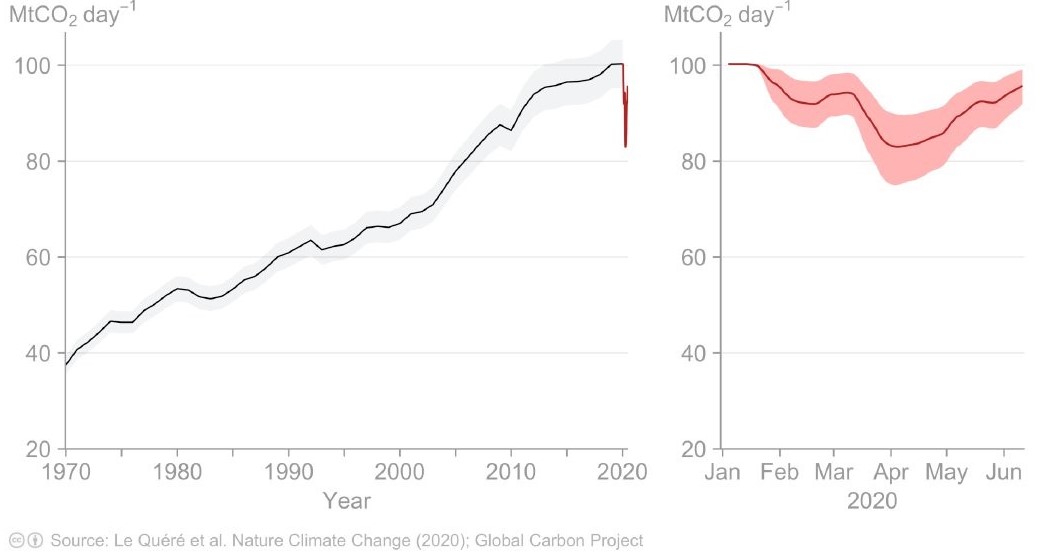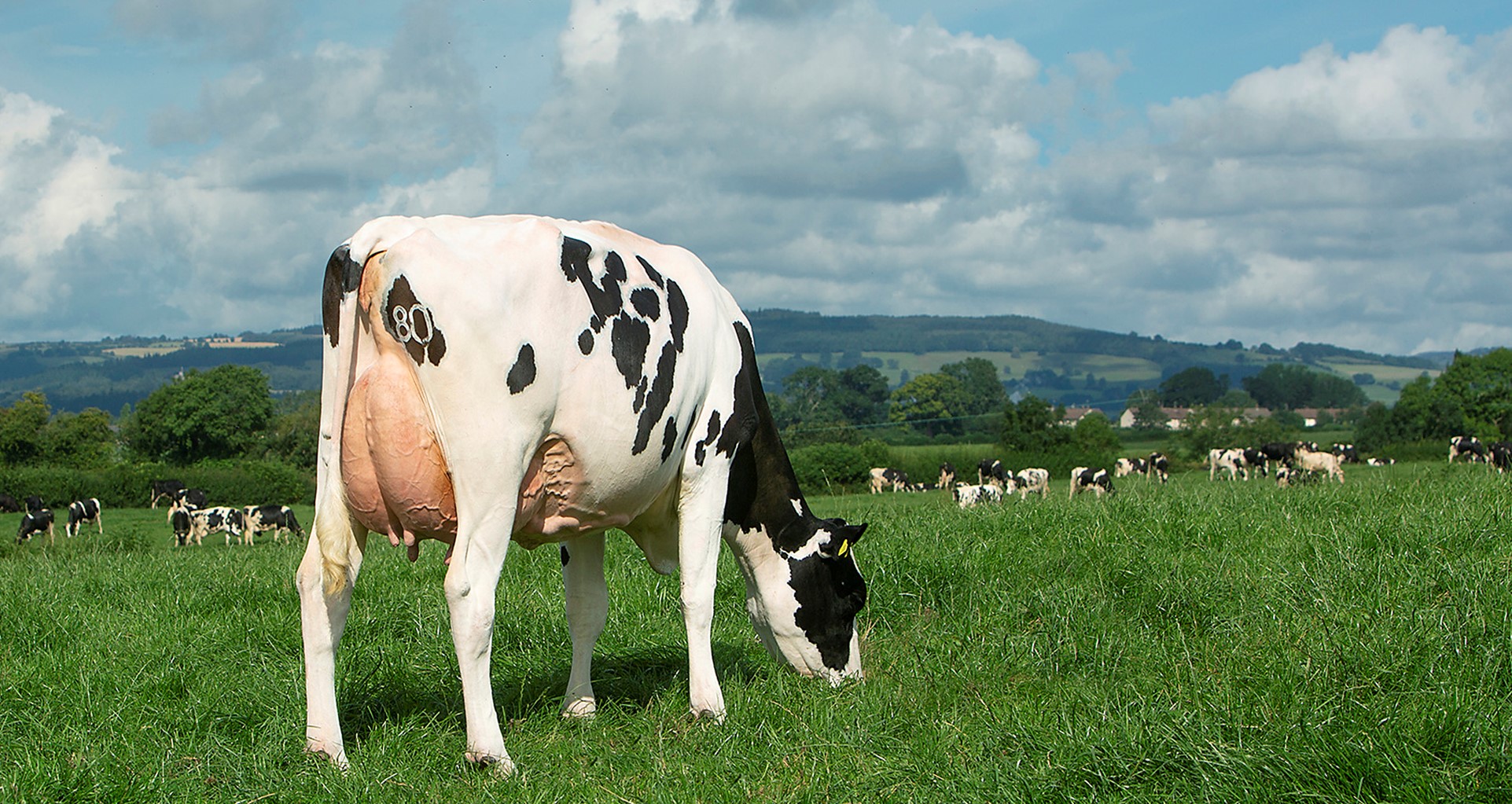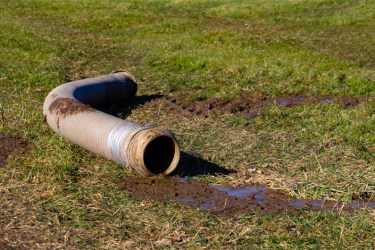By Tom Gill
When the global economy all but ground to a halt back in March, one of the apparent silver linings was the impact COVID-19 was having on the natural environment.
Cancelled air journeys and industrial shutdowns prompted predictions that the world’s carbon dioxide emissions could fall a whopping 30.6bn tonnes this year — an 8% reduction on 2019’s figures.
According to the International Energy Agency (IEA), such a drop would be the largest ever recorded in terms of tonnes of CO2, and some six-times greater than the drop experienced during the 2008 financial crisis.

For those in the dairy sector, who have faced a barrage of criticism in recent years for the amount of greenhouse gases cattle produce, the statistics prompted a degree of validation that livestock isn’t the problem critics claim it to be.
If lockdown had resulted in such staggering improvements in emissions, many asked, then surely this was proof that cattle have been wrongly painted as the world’s environmental bad guys, and the industry could go about its business with a clear conscience?
In some respects, this might be the truth: there’s no doubt livestock have been unfairly criticised for many of the GHG problems and the agriculture industry has been unfairly judged for not doing enough. Dairy production emissions equate to c. 1.9-2.1% of total livestock greenhouse gas emissions. Since 1990, dairy farmers have delivered a 24% reduction in emissions since 1990, while transport has only delivered 3%. This has primarily been achieved through improving energy efficiency and adopting renewables, optimising on farm productivity through herd health and welfare, and improving feed strategies and grassland management.
British farmers can and will play an important role in tackling climate change and many more are ready to play their part.
No room for business as usual
An emissions reduction of such speed and magnitude isn’t sustainable for the long-term, and as the IEA pointed out, a reduction caused by a pandemic is “absolutely nothing to cheer about”.
What’s particularly concerning though, is that the 8% cut in emissions is roughly the reduction we need each year if we’re to limit global warming to less than 1.5C above pre-industrial temperatures.
And what’s more worrying, is that the target laid out in the Paris Agreement would require similar reductions every year for the next decade.
Clearly, then, there’s no room for any business – in any sector – to be carrying on as usual if it’s going to take its responsibilities towards sustainability seriously. Businesses everywhere need to act fast — and that includes all those in the dairy sector.
Seeking sustainability solutions
So how does the dairy sector take even greater steps to reduce emissions and contribute to a more sustainable economy?
The answer lies in a multi-pronged approach, which takes into account all aspects of the production and supply chain, and makes measurable, worthwhile, and both short and long-term improvements.
From a production perspective, that means starting at the bottom by tracking and measuring what’s happening on your farm right now, because only by knowing your base point will you know which actions to take to drive improvements.
If this seems daunting, or you don’t know where to start, it’s worth seeking out expert advice to help you measure your emissions baseline, and then identify areas where you could make changes.
It’s important to remember that depending on your business, some actions will be more impactful than others, while some might take longer to have a noticeable or meaningful effect.
Similarly, some measures might have different impacts on different businesses: there’s no silver bullet for everyone.
Don’t look at things in isolation
Genetics, feed efficiency, nitrogen management, the size of an animal (and therefore its feed requirement) and land management all have a critical impact on a dairy farm’s environmental footprint.
Looking at each of these aspects — and considering how you might improve them — is important. Talking to experts, benchmarking data and sharing ideas can all help.
Sequestering carbon is another important element when it comes to reducing a dairy business’ environmental impact, but again it’s something that requires measurement and consistent modelling to judge its success.
It’s not just about emissions
Regardless what your own herd’s day-to-day emissions, it’s important to remember that your farm is just a small part of a wider system; and that system also needs to be thought about critically.
For example, clearing rainforests for agriculture might be something that’s happening thousands of miles away from your business, but that doesn’t mean that it isn’t having an impact on your operation.
While there definitely needs to be some myth-busting done around the true impacts of soya and palm oil production, not all soya is created equal.
As responsible farmers, in the UK and wider Europe, we should be asking more questions about where our key raw materials come from, and look for alternative sources if we don’t get answers we’re happy with.
The next step
So, while the emissions drop during the pandemic might seem to have given the dairy sector a brief reprieve, the reality is we need to continue to focus on the long-term goals. Farmers can’t take their foot off the pedal.
As we’ve said before, if we’re serious about meaningful global change, and ensuring that agriculture is part of the solution, we need to all take responsibility and make changes now.
That means measuring and monitoring, identifying possible short-term and long-term improvements, asking questions about your business, and – where possible – collaborating with other players in the supply chain to help achieve your goals.







